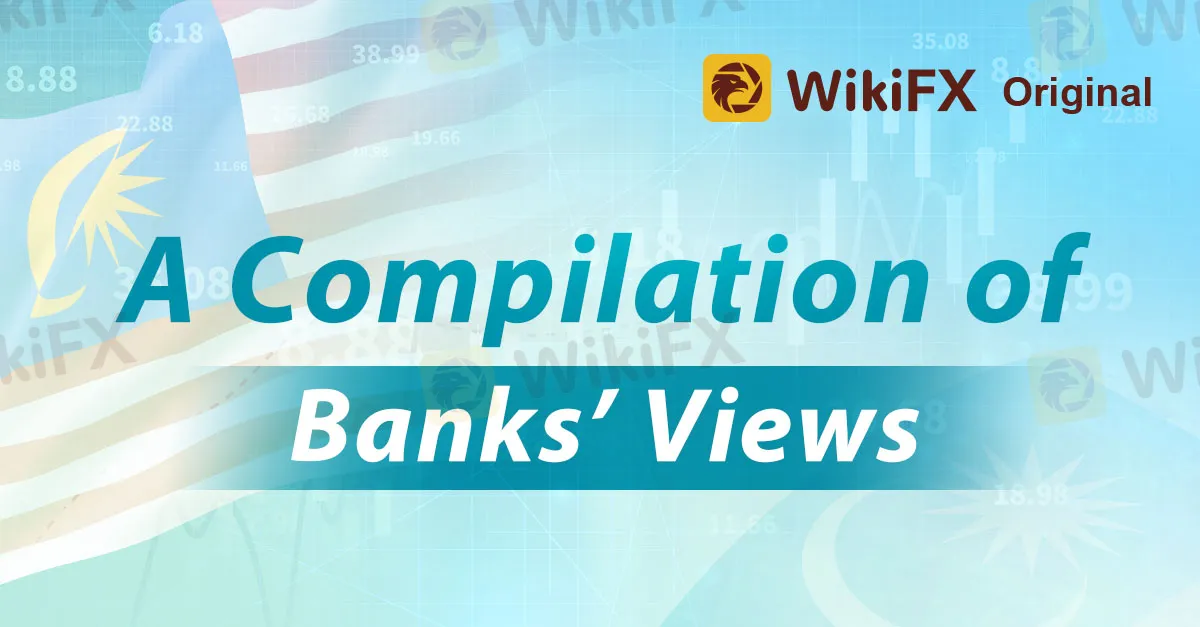简体中文
繁體中文
English
Pусский
日本語
ภาษาไทย
Tiếng Việt
Bahasa Indonesia
Español
हिन्दी
Filippiiniläinen
Français
Deutsch
Português
Türkçe
한국어
العربية
A Compilation of The Big Banks’ Views
Abstract:Is it not a hassle to go through lengthy bank reports full of industry jargon just to get a glimpse of their market views? In this recap, you only need 1 minute to know what the opinions of industry leaders on the current market condition are.

<WikiFX Malaysia Original – Editor: Fion>
Fitch Ratings projects that the impact of global stagflation scenarios on rated portfolios is most pronounced in sectors where market volatility has increased.
Deutsche Bank expects the Fed target rate to be 5%-6% and the U.S. economy to fall into a deep recession while energy and agricultural-related commodities could remain high throughout the year. Deutsche Bank economists warned that the Federal Reserve may need to implement the most aggressive monetary tightening since the 1980s to bring inflation down from a four-decade high, but that could lead to a severe recession in the United States next year.
Goldman Sachs economists reportedly claimed that the European Central Bank (ECB) is expected to raise interest rates by 25 basis points in July and once each in September and December. By next year, the ECB could raise rates 4 more times, bringing the key rate to 1.25%. Goldman Sachs is also waiting for the final decision of the ECB on whether to end its asset purchase program by the end of the second quarter. While a sharp slowdown in economic growth and renewed sovereign debt pressures could lead to a slowdown in the policy normalization process, a faster exit from easing would be needed if inflation expectations are higher and more severe inflationary impacts start emerging.

The World Bank reported on April 26 that Sri Lanka's poverty rate will rise further in 2022 as the country's economic situation worsens. Sri Lanka's poverty rate could hit 11.7% in 2022, compared to 10% in 2019.
Citigroup CEO asserts that the U.S economic growth would be unlikely to be affected by inflation as consumer savings will offset its impact.
Citibank suggests that the U.S. dollar could remain bullish at least until the FOMC meeting on the 4th of May. In the past few weeks, the rise in U.S. bond yields, the dollar's strength, and the stock market downturn had been the focus of market attention, and these three key factors shall stay in the spotlight (at least) until then.
<WikiFX Malaysia Original – Editor: Fion>

Disclaimer:
The views in this article only represent the author's personal views, and do not constitute investment advice on this platform. This platform does not guarantee the accuracy, completeness and timeliness of the information in the article, and will not be liable for any loss caused by the use of or reliance on the information in the article.
Read more

What Are The Top 5 Cryptocurrency Predictions For 2025?
Discover the top 5 cryptocurrency predictions for 2025, including Ethereum's rise, a potential bear market, meme coin struggles, and regulatory shifts.

Think Before You Click: Malaysian Loses RM240,000 to Investment Scam
A manager from Sibu, Malaysia, lost RM240,000 to a fraudulent investment scheme.

What Euro Investors Can't Afford to Miss
For euro investors, geopolitical factors, inflation data, and the European Central Bank's policy direction will determine the market trends over the next few months.

How Big is the Impact of the USD-JPY Rate Gap on the Yen?
The U.S. Federal Reserve's repeated rate cuts and the narrowing of the U.S.-Japan interest rate differential are now in sight. So, why is the U.S.-Japan interest rate differential so important for the yen’s safe-haven appeal, especially when global economic uncertainty rises?
WikiFX Broker
Latest News
Will Gold Break $2,625 Amid Fed Caution and Geopolitical Risks?
ECB Targets 2% Inflation as Medium-Term Goal
New Year, New Surge: Will Oil Prices Keep Rising?
PH SEC Issues Crypto Guidelines for Crypto-Asset Service Providers
FTX Chapter 11 Restructuring Plan Activated: $16 Billion to Be Distributed
Think Before You Click: Malaysian Loses RM240,000 to Investment Scam
Bithumb CEO Jailed and Fined Over Bribery Scheme in Token Listing Process
WikiFX Review: Something You Need to Know About Saxo
Is PGM Broker Reliable? Full Review
Terraform Labs Co-founder Do Kwon Extradited to the U.S. to Face Fraud Charges
Currency Calculator






